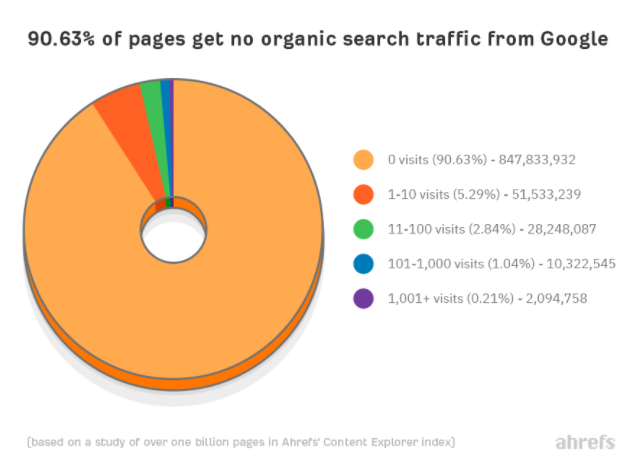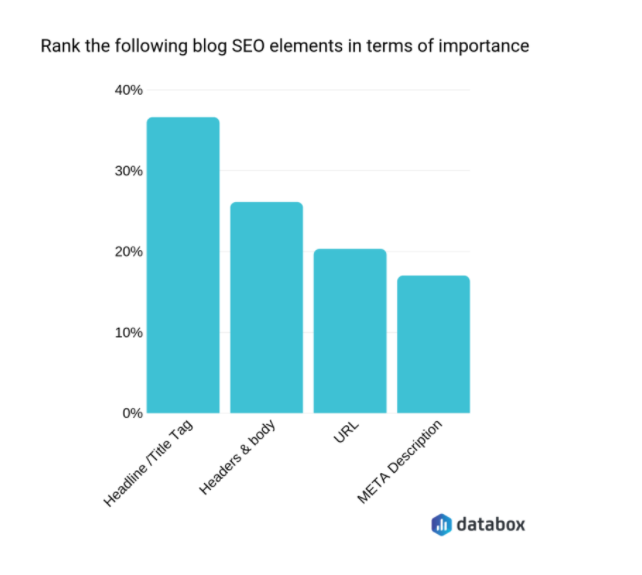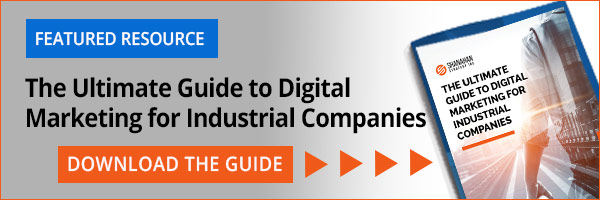You’ve written the blogs, used the right keywords, and worked hard on earning backlinks. On paper, you’ve followed the rules and have done everything correctly to boost your Google ranking for your manufacturing company in 2022. But you still can’t find your website on the search engine result pages (SERPs). What gives?
Before you get ready to toast to the new year, don’t slow down your manufacturing search engine optimization (SEO) strategy. In 2022, SEO will still be an essential element to attract customers to your website. Still, with the algorithms constantly evolving, it’s more important than ever to stay on top of your Google ranking score.
In this post, you’ll discover the best ways you can improve your Google ranking and ensure your target audience is finding you in their search results. With over 360 billion Google searches this year alone, manufacturers can get an edge on the competition by capitalizing on SEO.
Ready to learn more? Let’s get started.
Key takeaways:
- A higher Google Ranking allows you to drive relevant search traffic to your website
- Writing quality content with targeted keywords signals that your website offers valuable information
- Earning high-quality backlinks signals that your website is credible
Why Does Ranking Matter in 2022?
Every time someone creates a search, Google indexes over 56.5 billion different websites to deliver the most relevant results for the query. The factors on your site help Google determine if your website is credible enough to rank it over similar content and competitors. Essentially, if rankings didn’t exist, search engines wouldn’t meet users’ needs, and users would never find the right website that answered their initial query.
With the right ranking features, your website can appear on search result pages for users who are looking for similar products or services. In fact, 71% of websites that appear on the first page results in an organic click, increasing the likelihood of earning a new lead or sale. If your website ends on the second or third page, you’re fighting for scraps and will need to use Google Paid Ads (PPC) to drive website traffic.
Even more staggering – 90% of all organic websites never get any traffic from Google. Meaning, the more effort you put towards SEO and your Google ranking is essential to drive new customers to your website.

Analyzing Your Current Google Ranking
Before jumping in and updating your website, it’s crucial to understand your current ranking to know where to improve your search engine placement. Searching for your top keywords isn’t enough to get a comprehensive view of your ranking since SERPs customize results based on your browsing history and location.
For tech-savvy businesses, there are a few tools you can leverage to monitor your Google ranking for manufacturers in 2022. Here are a few to get started:
- Semrush
- Ahrefs
- Moz Pro
- Google Search Console
To win at rankings, you should focus your attention and resources on Google. While other search engines like Baidu, Bing, and Yahoo! may drive site traffic, Google still holds over 70% of global desktop traffic, and understanding your search authority gives you the best chance at growing your online presence.
Ultimate Guide to Google Ranking for Manufacturers in 2022
Improving your 2022 Google ranking for manufacturers will drive website traffic and help you get an edge on your competition who might not be as proactive. Let’s take a look at a few ranking factors to help you score big on the SERPs next year:
Developing Valuable Content
For manufacturing companies in niche audiences, content is still king. While you might be sick of hearing that phrase, Google continues to make it clear that they prioritize high-quality and valuable content in their ranking algorithm.
To create quality content, you need to utilize buyer personas to target your audience’s pain points and desires. Here are a few additional elements your content needs to include:
- Contain credible information: The content should answer your customer’s questions and present your company as the solution. At the core, it needs to be valuable and relevant.
- Match search intent: Keywords still play a massive role in SEO, and your content should match what the user initially searched. For example, if a user types in “copper valves gas lines,” your content should provide resources on that particular product line.
- Develop engaging material: Your content needs to be straightforward and organized for the user to find relevant information. Quantity doesn’t equal quality!
- Keep it updated: Updating your content with fresh headlines, images, prices, and more informs Google that your website is maintained.
It’s advantageous for many manufacturers to maintain a blog or news page that you can constantly update and provide educational, thought-leadership content for Google to crawl and rank. You can use a keyword technology tool to discover the right keywords to use in your content and position them in appropriate locations like the title, headings, and metadata to improve rankings. Keywords will help your content appear for relevant searches in the SERPs, but remember, your content needs to match intent.
Providing a Mobile-First Mentality
As of 2021, Google primarily uses a website’s mobile version for indexing and ranking. If you have a desktop and mobile version of your website, it’s more productive to migrate to one site that’s either mobile-optimized, friendly, or responsive. While each has its complexities, opt for a mobile responsive website that looks good on any device.
Optimizing your website for mobile increases the chances of Google indexing your pages and serving it as a higher ranking to a user. You can follow Google’s advice to ensure you offer an identical desktop and mobile experience:
- Make sure Google can crawl your resources and content
- Use the same metadata on desktop and mobile
- Ensure your ads don’t cause a negative user experience
- Insert high-quality images with alt tags
- Make it easy to find videos and images
- Avoid fragmented URLs and check the hreflang links
- Verify that the robot.txt directives are the same
With Google prioritizing mobile indexing, you’ll also want to ensure that your mobile site can handle an increased crawl rate.
Offering a Strong User Experience
What happens when someone clicks on your website? Is your page speed too slow? Is it challenging to navigate? Manufacturers need to consider user experience in 2022 to build domain authority and make a solid first impression on new website visitors.
Here are the three core elements to keep in mind when optimizing for user experience:
- Site architecture: Referring to your website organization, you want users to easily navigate your site to find relevant information. Your architecture should include the navigational menu, hierarchy, and how pages link together to help search crawlers index your pages.
- Security: Google wants your website to be secure for users and will prioritize your site over others if you’re trustworthy. You can achieve this by using Hypertext Transfer Protocol Secure (HTTPS) over Hypertext Transfer Protocol (HTTP).
- Page speed: Your website needs to be fast. Google looks at three main Core Vitals to determine how long it takes for content to load, how fast your website reacts to user actions like clicking a button, and load times for objects like pop-up forms.
Implementing On-Page Optimization
With on-page optimization, you can make it easy for Google to index and analyze whether your content is relevant to a user. While you want to spend most of your time creating valuable content, many manufacturers forget about the on-page features that boost your ranking.
Instead, focus on optimizing your site with these on-page elements in conjunction with your content:
- Meta title tag: Impacts both your SEO and click-through rate (CTR), so you need to create something straightforward enough to capture the user’s attention
- Meta description tag: Google highlights this in search results under the title, and if you don’t have one, it will show the first paragraph on your page
- Images: Visual elements not only give a better user experience, but they help boost your rankings on Google Image Search
- Header tags: By formatting all headlines into header tags with keywords, readers can quickly scan your content to find the most relevant information

Earning Backlinks
As one of the most important ranking factors, backlinks are critical to helping build your authority. Essentially, the more websites that link to your website help you rank higher. Google’s original ranking algorithm, PageRank, is based on backlinks and signals that help rank your credibility.
Here are a few best practices to earn backlinks from other credible websites:
- Build listings in popular directories like Facebook, Yelp, Better Business Bureau, and industry sites that already rank high in SERPs
- Avoid buying or soliciting other websites for backlinks – you should be more focused on creating quality content that attracts links
- Drive fewer high-quality links than hundreds of low-quality websites that Google doesn’t deem as credible
- Ensure the link’s anchor includes your focus keyword and doesn’t produce a 404 error
Building Domain Authority with Your Google Ranking
While building your Google ranking isn’t a set-it-and-forget-it marketing strategy, it’s one of the best ways to drive traffic to your website without consistently overspending your budget. For manufacturers, it’s essential to stay updated on algorithm updates to inform your SEO strategy and produce better website performance. With more website visitors, you’re more likely to increase conversions and your bottom line in 2022.
Ready to optimize your website? Get started with Shanahan Strategy Inc.

